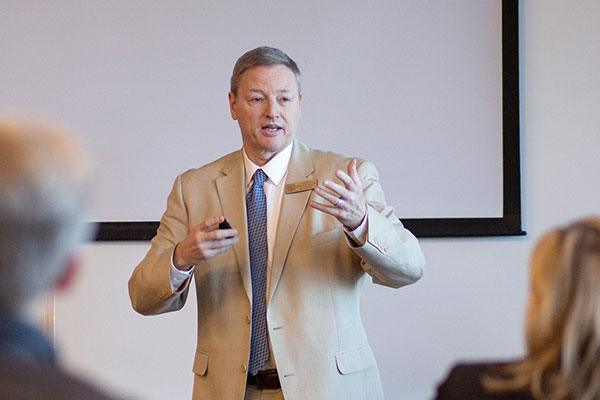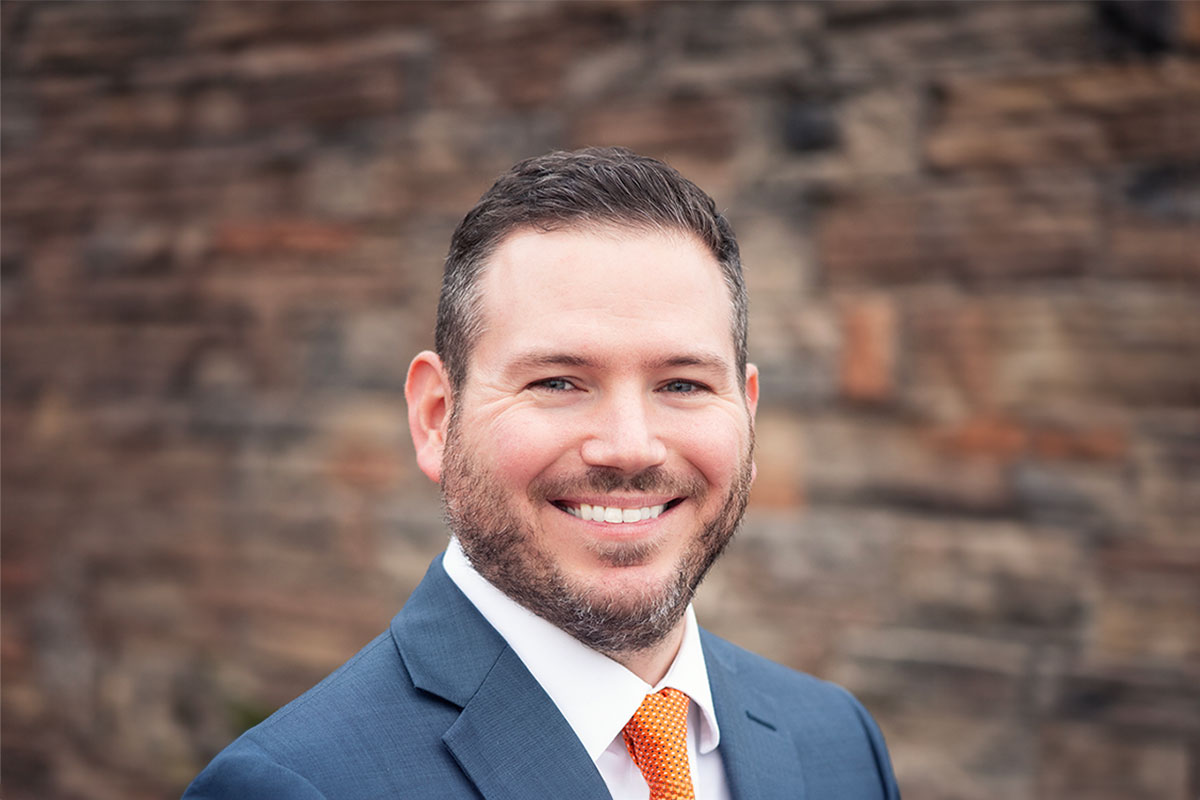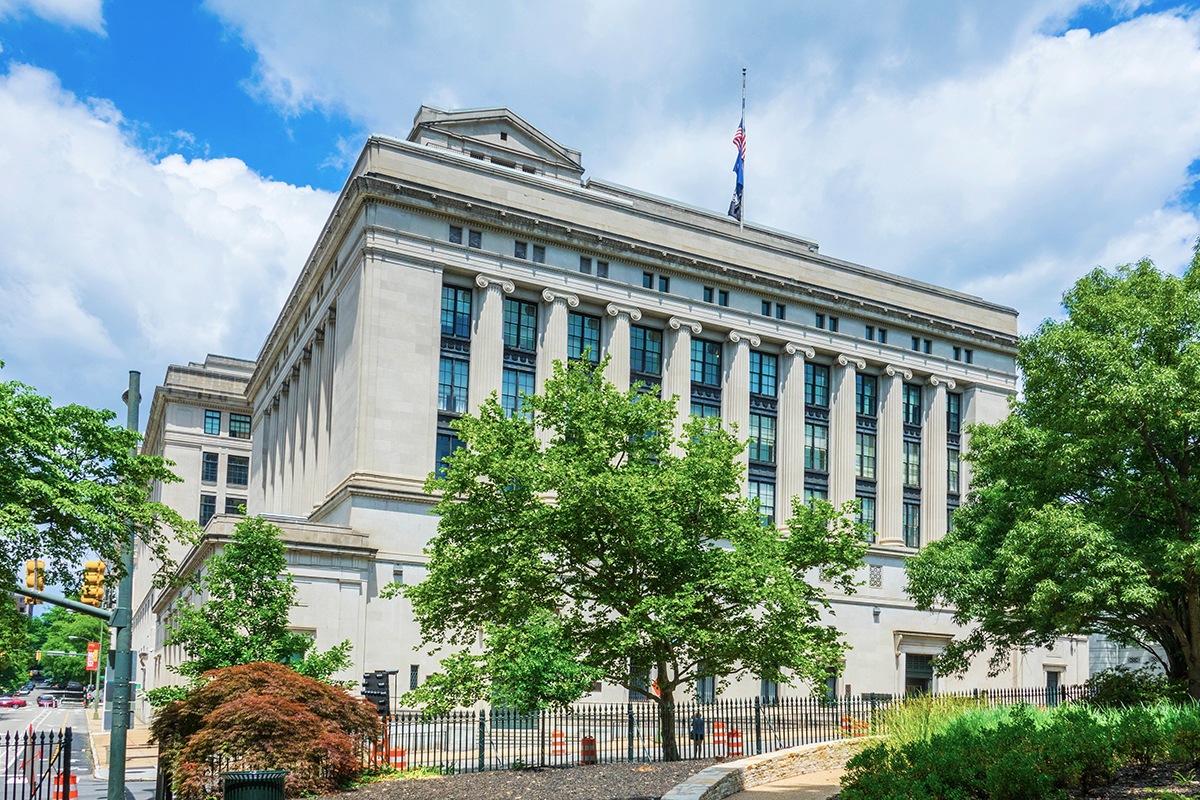Search News Archives
Filter News Articles
Additional Navigation
Liberty video engineer ‘Al’ Stephens celebrates 50 years and counting of a storied broadcasting career
October 17, 2023 : By Ryan Klinker - Office of Communications & Public Engagement

Richard “Al” Stephens has witnessed the history of Liberty University and then some in his 50 years as a video engineer for Liberty and its related ministries. Since Liberty’s founder, the late Dr. Jerry Falwell, first shared his vision for the school from the pulpit of Thomas Road Baptist Church (TRBC), where Stephens worked in the control room for many years, he has seen that vision come to fruition.
On Oct. 2, Stephens’ 50 years and counting were celebrated with a party attended by current and retired employees of Liberty’s broadcasting department (called Liberty Broadcast Experience, or LBX) as well as Liberty President Dondi E. Costin, Chancellor Jonathan Falwell, and Provost and Chief Academic Officer Dr. Scott Hicks. In addition to receiving a plaque and gift cards in recognition of his 50-year milestone, Stephens was given a challenge coin by President Costin, who is a retired Major General in the United States Air Force.
“It blew me away, it was just incredible,” Stephens said of the event. “I wasn’t expecting to have so many people, especially beyond the current staff members, to come to it. I understand from the military that when an officer gives you a coin, it’s a huge deal, and so I was very honored when President Costin gave me one.”

A native of Lynchburg, Va., Stephens was a child when his parents became charter members of Thomas Road Baptist Church in 1956. He remembers the church’s initial services in Mountain View Elementary School and the converted Donald Duck soft drink bottling plant. After a school field trip to the local television studio of WLVA (now WSET) sparked an interest in cameras, Stephens volunteered as a teenager to work in the control room of the Pate Chapel on Thomas Road, which ran three black-and-white cameras at the time to broadcast the “Old-Time Gospel Hour” — a nationally syndicated television program that featured the church’s Sunday services.
“I was interested in the TV part of it because I saw the black-and-white cameras (the church) had, and I just asked if I could help out,” Stephens recalled. “The man in charge, (engineer) Dusty Rhodes, said yes, and my first job was just turning one knob to raise and lower the lights in the sanctuary during the service. We were in a small, square control room, and I was amazed that they even let me in the room. I started as a volunteer, and I’ve never looked back.”

Continuing to volunteer on Sundays, Stephens attended technical school and worked at an educational station in Roanoke, Va. He became a staff member at TRBC in 1973 and helped maintain the church’s cameras.
“When I started, I was kind of the only technical person on staff, and my job was just to keep the stuff operating,” he said. “If something would break and need repairs, I would work on it during the week because it had to be running by Sunday for the church program. I just did whatever we could to have the cameras going on Sunday.”
When Falwell was promoting what is now Liberty University, Stephens and other members of the video team would film clips of campus construction that Falwell could show in church and on the “Old-Time Gospel Hour.” Stephens remembers the historic prayer gathering on campus in 1977, where Falwell joined students and staff in the snow on a bare campus to seek God’s provision for new buildings. Stephens was behind the scenes, working out of a broadcast truck the church had rented.
The decision to join the video team at TRBC, Stephens explained, was an effort to be a part of something that could make a lasting impact on others or even change lives.
“I made a decision early on… that I wanted to work here and invest my life in something that counted for something (greater) than just broadcasting a show,” he said. “At the peak of the ‘Old-Time Gospel Hour,’ we were on air on 200 stations. Dr. Falwell would say that people had written or called in saying they had accepted the Lord as their Savior, that their families and marriages were being put back together, that lives were being changed after watching, and I knew that that was worthwhile. I wasn’t just taking up a job and doing the job every day; it was doing my part in changing lives.”

Today, Stephens continue to work as a senior video engineer, admittedly having to learn some from his younger coworkers about the rapidly advancing digital equipment that the university adopts. When asked what keeps him coming back to campus for work after 50 years and with more to come, Stephens simply laughed.
“Well, I think I’d be bored out of my skull if I didn’t.”
And Stephens is not the only one in the broadcast department who sees their work as a ministry. While he sincerely appreciated the recognition he received, Stephens acknowledged that there are others who have been pouring their heart into TRBC and Liberty for just as long as he has, with some of them being volunteers for much of that time.
“Particularly in the early days, we could not have done what we did without the volunteers; some of them are still here. They put thousands of hours into this place. We wouldn’t be here without them, and I, and this (department), are standing on the shoulders of people like them.”
Having colleagues who worked on the ‘Old-Time Gospel Hour’ and has seen the department grow to where we are now with the Liberty Broadcast Experience is remarkable,” said Bobby Keating, executive producer of Broadcast Communications. “The institutional knowledge and wisdom from employees such as Al are invaluable to ensure we hold fast to the original vision of training champions for Christ in broadcast, our field of specialty.”


